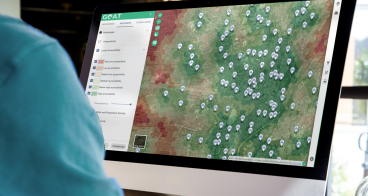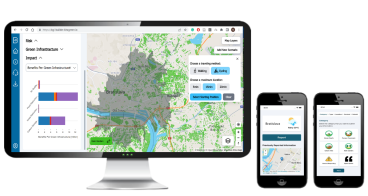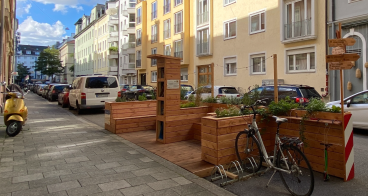New streets concepts: Experimenting from Parklet to Miniblock | By Ana Rivas
It is said that in times of crisis, there is an opportunity to reinvent, to become more creative and more resilient. And it is precisely that, what many cities across the globe did when faced with the lockdown restrictions of the pandemic during the strong waves of infection.
From one day to another, we began to see that cities like Paris or Milan were installing hundreds of kilometres of pop-up bike lanes to allow residents to commute in a safe manner, as public transportation was considered unsafe.
While some people had the luxury of owning a garden or a balcony to spend some time outdoors, not everyone had access to a park or public garden within a few minutes’ walk. Therefore, some cities started to broaden the interventions, and like in Munich and many other cities, local communities started to transform parking lots making public space available to people just in front of their houses.
Restaurants, bars and shop owners started to transform one or two parking spaces in front of their buildings in order to transform it into outdoor terraces to ensure the safe reopening of their businesses. And so, I can continue with a vast list of examples from residents, organisations and cities experimenting with tactical interventions with tape, paint, traffic cones or wood structures to transform streets and become resilient.
“Every street experiment aims to be a small yet meaningful contribution to a larger change trajectory” Source: SET Guidelines Kit – Chapter “Long Term Strategies”
Since then, experimentation has become a common practice in cities with different purposes and impacts, which go from raising awareness to seeing streets no just as channels for motorised traffic, but also to acknowledging that other uses and activities can take place there. Up to the implementation of proximity concepts such as the 15-Minute City.
Some cities replicate concepts that have worked in other cities at a smaller or bigger scale. Such is the case of Steinhuber Miniblock.
Scaling impact – From Parklet to Miniblock
Inspired by the ‘superblock’ concept in Barcelona, Munich researchers developed a comprehensive management plan to pilot street experiments in small and agile interventions that demonstrate the possible reconfiguration of the streets fostering car-independent neighbourhoods that promote sustainable mobility.
It all started in the summer of 2022, with the installation of a non-commercial parklet in Steinheilstraße in Munich. The street had not just this parklet, there were also three more commercial parklets that showcased the potential of change in the street use - no longer just for car parking but also for people to meet, to read a book or just simply to take a break. Thanks to the acceptance and positive feedback, this summer the intervention was upscaled to an entire ‘mini-block’, intervening in two streets that intersect with each other (Steinheil and Enhuber street), naming the project "Steinhuber Miniblock“ to give the project a local identity.
The Miniblock intervention stands out for its agility and acceptance – in just two days new street elements, pre-made modular wood structures, have been installed and inaugurated during a "Miniblock Party“ – a festival with international researchers as guests and local residents. Up to ten parklets, two mini mobility hubs with parking for active and micromobility vehicles, a delivery zone and carsharing parking and two green corridors with urban gardening beds and trees will be in place until the end of October.
Steinhuber Miniblock is a collaboration of TUM - Technical University of Munich, TUM Accessibility Planning, SET Street Experiments Tool, Kollektivis e.V. and wow! Urbane Utopien. The intervention is accompanied by a research project which will further investigate the impact of the new elements in place over three months (Jul – Oct 23). Conclusions will be drawn with respect to the effect on quality of public space and promotion of sustainable mobility options.
So, stay tuned on further insights!
Should you be interested taking first steps in placemaking and conducting a real ‘Street Experiment’ yourself, the SET Guidelines Kit (available for download in the shared files section below) is a guide with general considerations that help cities, organisations, and residents to get started when planning a street experiment. It showcases examples of tools and methods for communication and citizen engagement which are key to a successful street experiment. The guide has a section on observation and evaluation, which is currently being followed by Ana Rivas to develop an evaluation framework for Steinhuber Miniblock as part of her PhD project.
Published on 14 September 2023.






